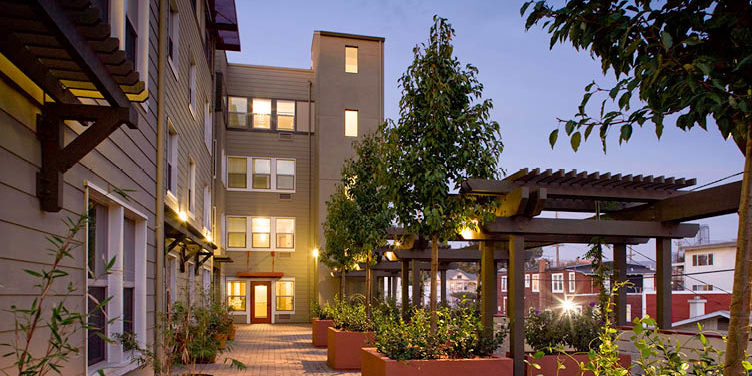By Guy Baldwin, Community Vision’s Policy, Research, and Information Manager
A legislative logjam that had blocked solutions to California’s housing crisis was cleared last month as the legislature passed, and Governor Jerry Brown signed, a suite of fifteen bills that add funding and remove roadblocks to affordable housing development. The result will be more opportunities for Community Vision to finance housing projects that serve the needs of low-income people throughout Northern and Central California.
Two key financing bills that had failed in previous sessions prevailed. SB 2 imposes up to a $225 fee on real estate transactions to finance about $250 million in affordable housing subsidy annually. SB 3 places an affordable housing bond measure on the November 2018 ballot that would raise $4 billion in additional housing funding. While these measures only partially replace the Redevelopment Agency funds that were available for housing financing before 2012, they are the most significant step to replace them since then. These funds will allow California municipalities to offer substantial later-stage financing to affordable housing developers. That will likely mean increased demand for the early financing that Community Vision offers for site acquisition, environmental studies, and other predevelopment costs as stalled housing projects begin to move forward.
Other bills were designed to thwart “not in my back yard” strategies that some neighbors and communities pursue to block affordable housing development. Developers can now move forward “by right” to pursue housing projects where need has been identified and multifamily residential zoning is already in place. Many obstacles once used by development opponents to slow or halt these projects no longer apply.
Other measures impose accountability and create penalties for municipalities that fail to respond to housing needs as defined in the eight-year housing planning cycle that each California jurisdiction must complete. Palo Alto, for example, has a goal to add 1,988 affordable units by 2022 as its fair share of meeting regional needs. For the first time, it could face fines of up to $10,000 per unrealized unit if it fails to cooperate with development within its borders. The California Department of Housing and Community Development has been tasked with stronger scrutiny of each jurisdiction’s progress toward these goals and has more power to intervene if it is out of compliance.
Community Vision has been prioritizing affordable housing lending for the last several years. We’ve partnered with other CDFIs to capitalize the East Bay Asian Local Development Corporation‘s Housing Acquisition Fund, a line of credit that the housing developer uses to buy and preserve existing affordable housing in Oakland. Our investment is likely to save over 200 units of affordable housing. We also won grants of more than $3 million from the CDFI Fund that we’re using to subsidize lower interest rates for early-stage affordable housing loans. Earlier this year, for example, Satellite Affordable Housing Associates borrowed $2.78 million at a subsidized 3% rate to purchase parcels in Oakland’s Lower San Antonio neighborhood where it will develop 84 affordable residences.
Community Vision will be busy during the 2018 campaign season encouraging voters to support the affordable housing bond measure. We also recognize that, however welcome these new funds may be, they are nowhere near sufficient to solve the housing crisis. We will continue to work with our affordable housing partners to pursue additional federal and state funding that results in more affordable in the low-income communities we serve.
About the Author
Guy Baldwin is Community Vision’s Policy, Research, and Information Manager. He has been with Community Vision with 7 years.






